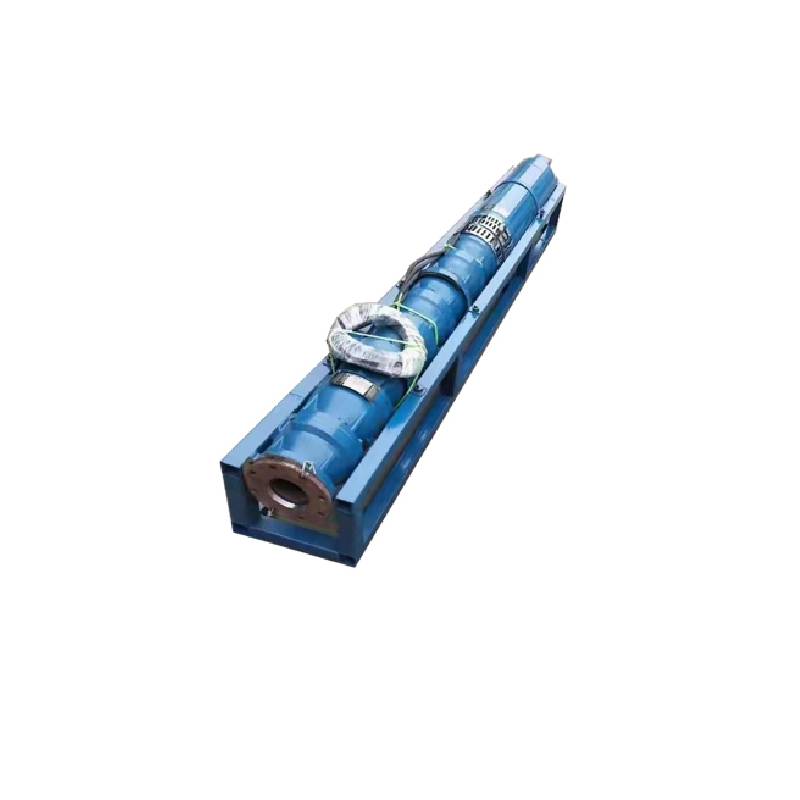Dec . 12, 2024 10:50 Back to list
water filled vs oil filled submersible pump
Water-Filled vs. Oil-Filled Submersible Pumps A Comparative Analysis
Submersible pumps are essential devices used in various applications, ranging from dewatering to industrial fluids handling. Among the types of submersible pumps available in the market, water-filled and oil-filled pumps are two prominent categories, each with its distinct advantages and disadvantages. Understanding the differences between these two types is crucial for engineers and operators when selecting the appropriate pump for their specific needs.
Construction and Operation
At its core, a submersible pump is designed to be submerged in the fluid it is pumping. This unique design allows the pump to push fluids to the surface rather than pulling them, which improves efficiency. The primary difference between water-filled and oil-filled submersible pumps lies in their construction and the type of cooling mechanism employed.
1. Water-Filled Pumps As the name suggests, water-filled pumps utilize the liquid being pumped (usually water) to cool the motor. These pumps have a simpler design and are often lighter than their oil-filled counterparts. The motor winding is directly immersed in the fluid, providing effective cooling while operating. This type of pump is particularly advantageous for applications involving clean or non-corrosive water, such as drainage, irrigation, and municipal water supply systems.
2. Oil-Filled Pumps Oil-filled submersible pumps use a separate oil reservoir for cooling. The motor is encased in a chamber filled with oil, which serves to disperse heat generated during operation. Oil-filled pumps are typically more robust, can handle larger volumes, and are more suitable for pumping abrasive or corrosive fluids. They are often employed in applications such as wastewater treatment, mining, and industrial liquid transfer.
Efficiency and Performance
The performance of a submersible pump is influenced by its design and the type of fluid it is intended to pump. Water-filled pumps tend to be less complex and more efficient for low to medium workload applications due to their straightforward cooling method. They often achieve better energy efficiency, making them more cost-effective for applications involving clean water.
water filled vs oil filled submersible pump

On the other hand, oil-filled pumps are preferred in high-demand scenarios. The oil cooling allows these pumps to operate at higher temperatures and under more intense conditions without overheating. This makes oil-filled pumps more suitable for continuous operation and demanding tasks, where reliability and durability are paramount.
Maintenance and Longevity
Maintenance requirements vary significantly between the two types of pumps. Water-filled pumps, while simpler, can be prone to reliability issues if the water quality is poor, leading to potential damage to the motor if contaminants are present. Regular maintenance is crucial to ensure that the water quality is acceptable and that no debris can interfere with the pump's operation.
In contrast, oil-filled submersible pumps generally require less frequent maintenance. The oil acts as a barrier to contaminants and helps extend the life of the motor, as it prevents corrosion and reduces wear and tear. However, if there is a leak in the oil chamber, it could lead to severe damage, and monitoring the oil levels becomes essential.
Cost Considerations
Cost is another critical factor to consider when choosing between water-filled and oil-filled submersible pumps. Water-filled pumps are typically less expensive both in upfront costs and in energy consumption, making them ideal for budget-conscious projects. Conversely, oil-filled pumps generally have higher initial costs but offer long-term savings through increased durability and reduced maintenance downtime.
Conclusion
In summary, the choice between water-filled and oil-filled submersible pumps depends on specific application requirements, such as the type of fluid being pumped, operating conditions, maintenance capabilities, and budget constraints. Water-filled pumps present an economical choice for clean water applications, while oil-filled pumps provide superior performance for more challenging environments. By understanding the fundamental differences and assessing the specific needs of a project, operators can make informed decisions that enhance efficiency and productivity in their pumping solutions.
-
Submersible Water Pump: The Efficient 'Power Pioneer' of the Underwater World
NewsJul.01,2025
-
Submersible Pond Pump: The Hidden Guardian of Water Landscape Ecology
NewsJul.01,2025
-
Stainless Well Pump: A Reliable and Durable Pumping Main Force
NewsJul.01,2025
-
Stainless Steel Submersible Pump: An Efficient and Versatile Tool for Underwater Operations
NewsJul.01,2025
-
Deep Well Submersible Pump: An Efficient 'Sucker' of Groundwater Sources
NewsJul.01,2025
-
Deep Water Well Pump: An Efficient 'Sucker' of Groundwater Sources
NewsJul.01,2025
-
 Submersible Water Pump: The Efficient 'Power Pioneer' of the Underwater WorldIn the field of hydraulic equipment, the Submersible Water Pump has become the core equipment for underwater operations and water resource transportation due to its unique design and excellent performance.Detail
Submersible Water Pump: The Efficient 'Power Pioneer' of the Underwater WorldIn the field of hydraulic equipment, the Submersible Water Pump has become the core equipment for underwater operations and water resource transportation due to its unique design and excellent performance.Detail -
 Submersible Pond Pump: The Hidden Guardian of Water Landscape EcologyIn courtyard landscapes, ecological ponds, and even small-scale water conservancy projects, there is a silent yet indispensable equipment - the Submersible Pond Pump.Detail
Submersible Pond Pump: The Hidden Guardian of Water Landscape EcologyIn courtyard landscapes, ecological ponds, and even small-scale water conservancy projects, there is a silent yet indispensable equipment - the Submersible Pond Pump.Detail -
 Stainless Well Pump: A Reliable and Durable Pumping Main ForceIn the field of water resource transportation, Stainless Well Pump has become the core equipment for various pumping scenarios with its excellent performance and reliable quality.Detail
Stainless Well Pump: A Reliable and Durable Pumping Main ForceIn the field of water resource transportation, Stainless Well Pump has become the core equipment for various pumping scenarios with its excellent performance and reliable quality.Detail
